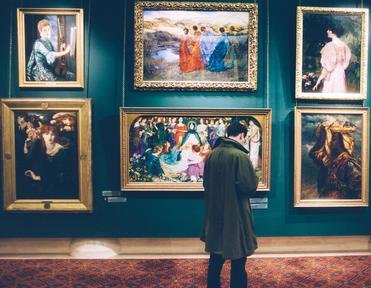Quiz Answer Key and Fun Facts
1. With a collection of over 2,000 paintings, the National Gallery is located in which famous London square?
2. Which of these iconic ancient artifacts would you NOT able to see at the British Museum?
3. What outstanding urban history museum was originally located in the controversial Barbican complex?
4. The huge Victoria and Albert Museum houses the world's largest permanent collection of what?
5. The museum of what public institution is housed in a Victorian glass and iron building at Covent Garden?
6. Part of the University of London, the Courtauld Gallery boasts a world-class collection of paintings from what influential 19th-century art movement?
7. Resembling a massive medieval cathedral, the Natural History Museum houses a rich collection of what objects?
8. Opened in 2000, Tate Modern is located on the southern bank of the Thames. What was the former use of the building where the gallery is now housed?
9. The National Maritime Museum is part of a UNESCO World Heritage Site located in which historic and "timely" town in southeast London?
10. What former royal residence, up river from central London, was built by Cardinal Wolsey during the reign of Henry VIII?
Source: Author
LadyNym
This quiz was reviewed by FunTrivia editor
stedman before going online.
Any errors found in FunTrivia content are routinely corrected through our feedback system.
